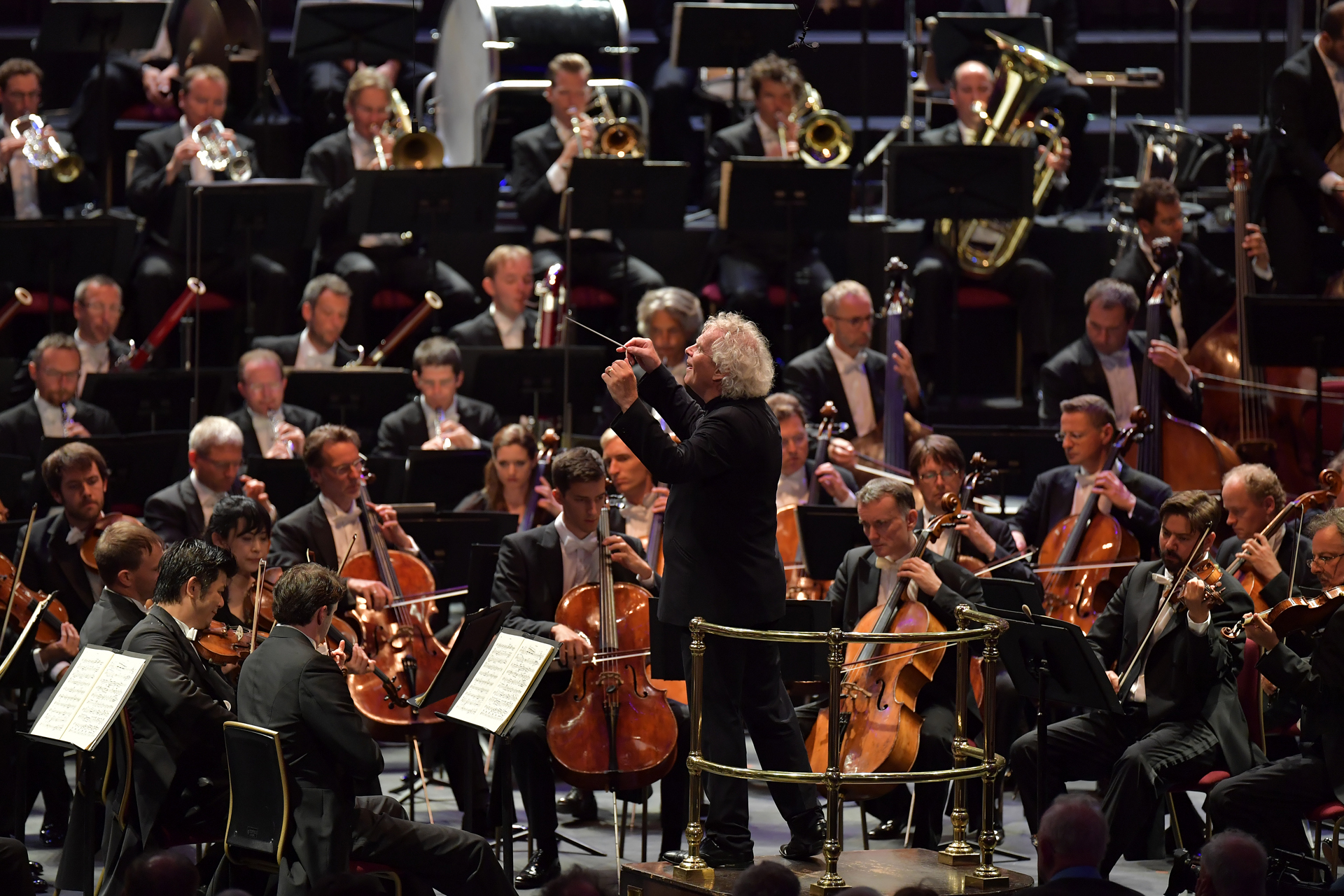What do Boulez's Éclat, for 15 instruments, and Mahler's Seventh Symphony, for over 100, have in common? Most obviously, guitar and mandolin, symbols of a wider interest in unusual sonorities. But while Boulez aims, as often, for needle point precision, Mahler uses selective groups, at least up to his finale when he exuberantly exchanges night for day, to create peculiar and unsettling grades of chiaroscuro. No one has ever gone, or is ever likely to go, deeper in the creation of subtle perspectives than Sir Simon Rattle and the Berlin Philharmonic.
There's plenty of éclat, in the usual sense of flamboyance and vivacity, throughout the symphony; very little in Boulez's 10 minutes of ear-tickling shards (though I'm told that "splintering" can also be a possible meaning). The piano, it's true, kicks off commandingly, but what follows is a seemingly random parade of refinements from the tuned percussion, the wind and string group tantalisingly held in check until near the end, where they quickly fizzle out. The Albert Hall supported the tintinnabulations well, though bottle-clinking from the box behind me was an optional extra. Despite the weird tartan effect of the Proms' LED strip at the back, which gets ever more outlandish, "Auld Lang Syne" was not evoked.
The Alpine idyll at the heart of the movement was ravishingly back-litAfter a long period of platform rearrangement – no chance, given the forces, of Rattle using the unintervalled stretch to plunge from one work to the other – we were into the funereal trudge and the lament of a very artistic tenor horn (uncredited) at the start of Mahler's first starless night picture. It should be a scary one, once the phantasmagorical parade gets under way. Was the torpid start delberate? It seemed as if Rattle was taking some time to get his selectively-wielded baton in to gear. There was, at first, little of the tragedy-queen-of-night fierceness of the City of Birmingham Symphony Orchestra on Rattle's recording, made 25 years ago – my top choice on BBC Radio 3's Building a Library many moons ago.
Nor was there anything like the sheer drive and sweep of Andris Nelsons' Prom Mahler 6 last year. The first movements of both symphonies correspond, though Rattle's players seemed to prefer friskiness to heft; fair enough. Yet the Alpine idyll at the heart of the movement was ravishingly backlit, and eventually the tension as well as the sheer sophisticated beauty of sound took a hold in a climax and coda of rhythmic intensity.
From the first Nachtmusik ("Night-music") onwards, miracles of sound abounded. Rattle drew a uniquely veiled, mysterious colouring from the horns' supernatural night processional, applauded by bow-on-wood second violins, and the wailing, klezmer-inflected and oboe-led woodwind in the trio subtly broke the heart. Time and again there were sounds on the threshhold of audibility, like the weird little flute solo marked fluchtig ("volatile"), and from the horn calls onwards, so many effects sounded offstage when the players were there for us to see them craft their solos.
You could trust those Berlin trumpets never to split a single top CShadowy, gauzy intimations reached their apogee in the ghosts'-high-noon central waltz, dynamic levels mostly down so that the big heartsurge just past the mid point really made its mark. As on his recording, Rattle was determined not to make a slow movement out of the second Nachtmusik's pre-dawn serenade – anything but clockwork in its volatility, with plenty of charm and wit around the sinister moments when time stands still, and I've never heard the horn solo (Stefan Dohr, superlative) in the central relaxation make more of a concertante impression. Guitar and mandolin were perfectly audible from where I was sitting; sometimes they're placed under the conductor's nose, but here their position just in front of the harps seemed just right. Andreas Ottensamer held a trill to seeming infinity in the sleepy coda; in this performance, one was made aware of how each of the central night character-pieces sinks to its rest to give way to the next carnival float.
Then that wild, sun-drenched celebration of a finale, Mastersingers and Merry Widow on steroids. You could trust those Berlin trumpets never to split a single top C, and I've always liked it that Rattle has never overdone the irony or grotesquerie; there's so much sheer joy and charm in the interpretation that you can't help feeling Mahler is actually enjoying the return from his mountain seclusion to the civic hurly-burly. Besides, such panache meant that any encore would have been otiose, short of playing the whole crazy-brilliant movement all over again. Yes, this team owns this very special case among the Mahler symphonies.
- Hear and watch this concert for the next month on the BBC iPlayer
- The full range of Berlin Philharmonic/Rattle reviews on theartsdesk
- Read more Proms reviews on theartsdesk














Add comment